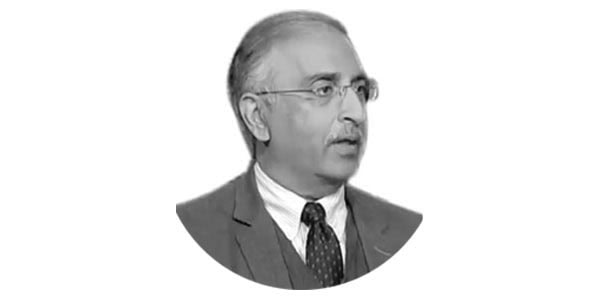Living on debt
In 1971, some fifty years ago, each man, woman and child in this country was indebted to the tune of Rs500. As of today, each man, woman and child in this country is indebted to the tune of Rs245,000.
From 1960 till 1990, for a good thirty years, Pakistan was a high growth, low inflation economy. In 1970, Pakistan’s economy grew by a wholesome 11 percent. In 1980, the rate of economic growth was recorded at 10 percent.
As of today, Pakistan is a low growth, high inflation economy. In 1997, Pakistan’s economy grew by a meager 1 percent.
In 2020, the State Bank of Pakistan (SBP) estimated that Pakistan’s real GDP contracted by 0.4 percent, making it the first time since 1952 that Pakistan recorded negative economic growth.
I read somewhere that “Pakistan has developed a vicious debt culture, something that’s similar to borrowing fuel to run your car, which is a guzzler-a few kilometers and the tank goes empty. Back to the petrol station, which in Pakistan’s case is the IMF.”
From 1947 till 2008, Pakistan’s accumulated debt stood at Rs6,000 billion. The PPP government-from 2008 till 2013-took it to Rs16,000 billion. The PML-N government-from 2013 till 2018-took it to Rs30,000 billion.
The PTI government-from 2018 till 2022-took it to Rs54,000 billion. The PPP government took on an additional debt of Rs5 billion a day; PML-N Rs8 billion a day and the PTI government Rs17 billion a day. For the record, close to 80 percent of the entire national debt has been added in the past 4 years.
As of today, Pakistan’s debt servicing is 80 percent of the government’s net revenue, 57 percent of FBR revenue and 42 percent of all government expenses. If things don’t change, by 2030, debt servicing will be 100 percent of FBR taxes.
Clearly, Pakistan’s debt is not sustainable. Why have we made Pakistan indebted to the tune of Rs54,000 billion? Well, every June our Minister of Finance stands in the National Assembly and announces the annual budget informing us that the difference between the projected income and expense will be around Rs4,000 billion or more. Lo and behold, we take on additional debt in the amount of Rs4,000 billion to fill the income-expenditure gap.
This year, for instance, the difference between our imports and exports could hit a high of $50 billion. Part of that difference will be filled by foreign remittances but the other half has to be filled by dollar debt.
We are already in a hole-still digging. The debt that does not even show up in the books is an additional Rs6,000 billion: circular debt in electricity Rs2,500 billion; circular debt in the gas sector Rs1,200 billion; circular debt in Pakistan State Oil (PSO) Rs1,000 billion; commodity operations Rs700 billion and the circular debt at the FBR Rs700 billion. That’s digging even deeper into the debt trap.
Red alert: Pakistan’s economic disequilibria is spiraling out of control. We need a credible fiscal consolidation plan, a comprehensive privatization plan and a solid economic growth strategy. We need to pay down our debt through privatization and at the same time ‘grow’ out of debt. We must not forget that










